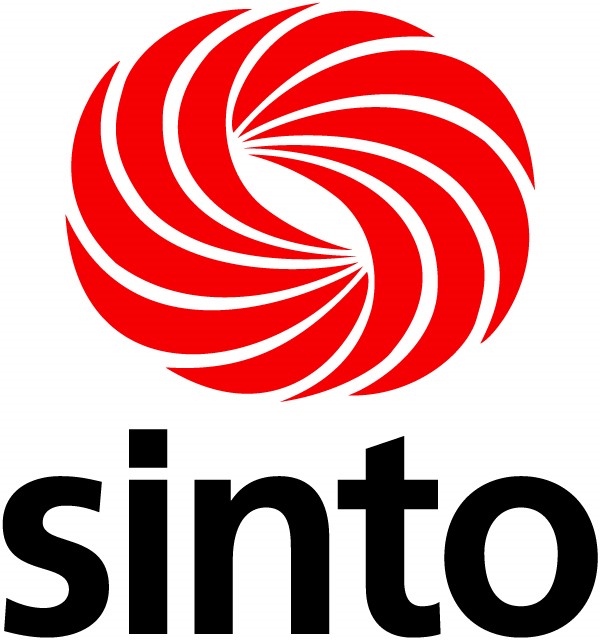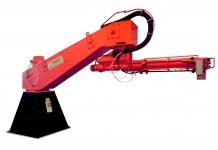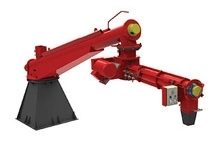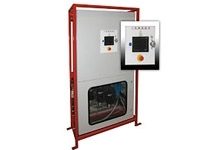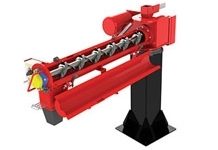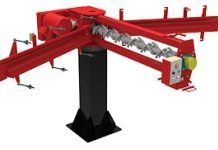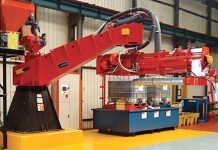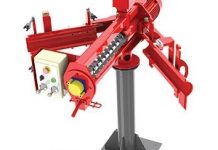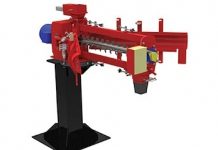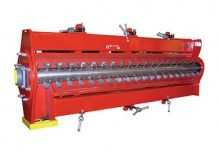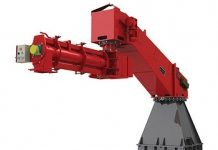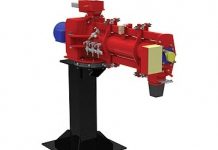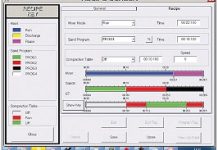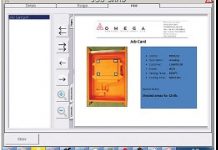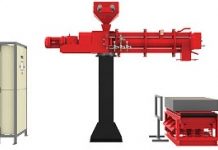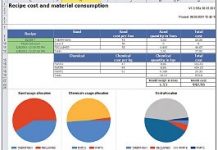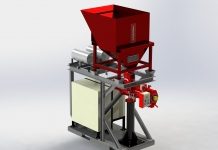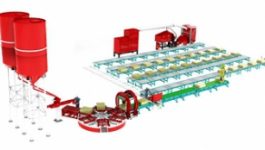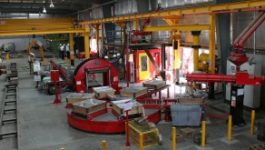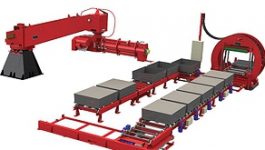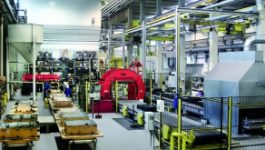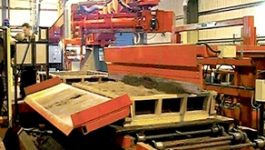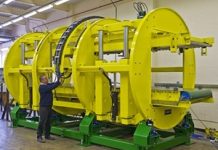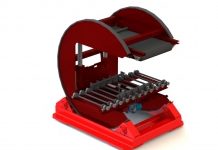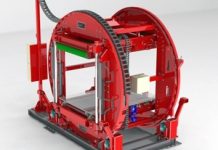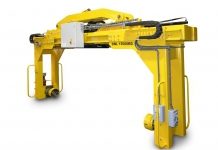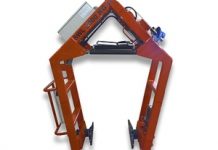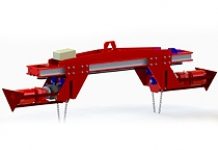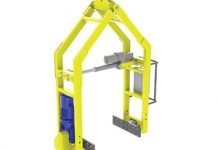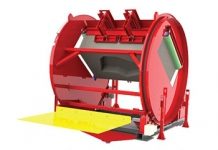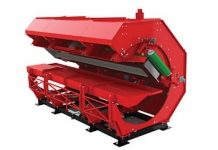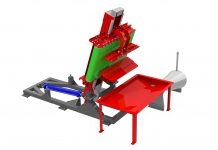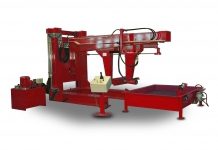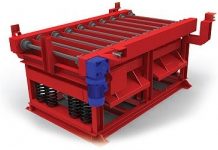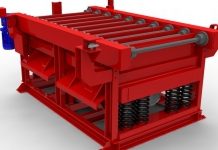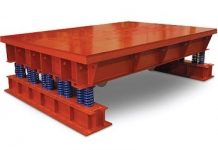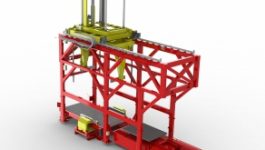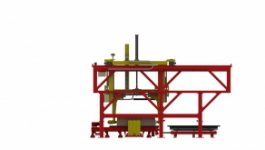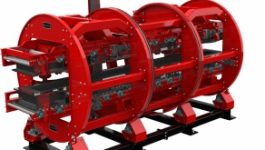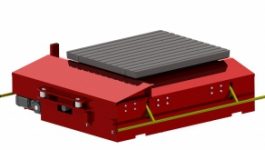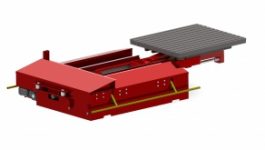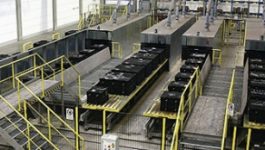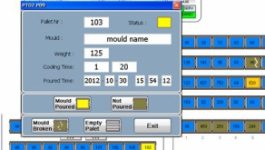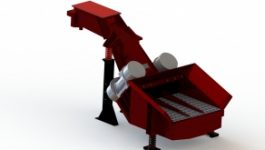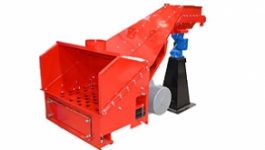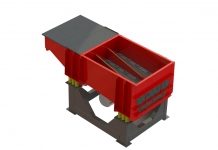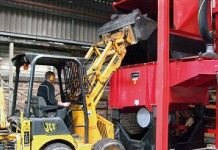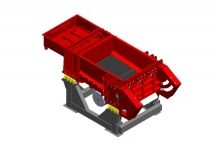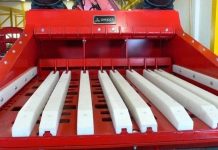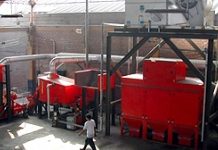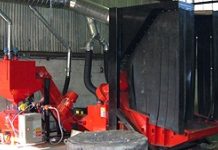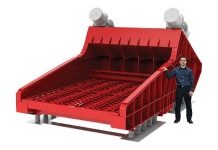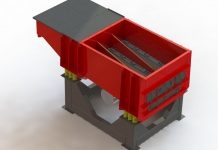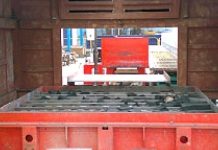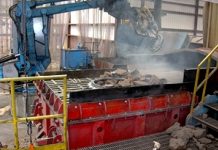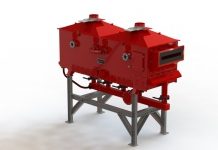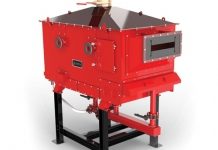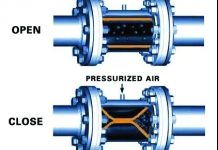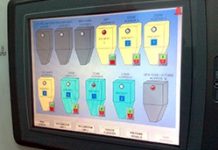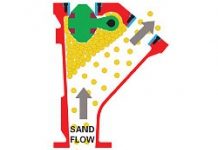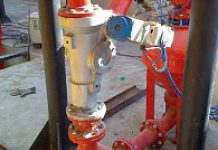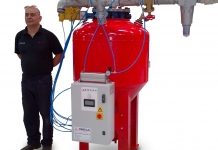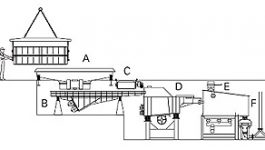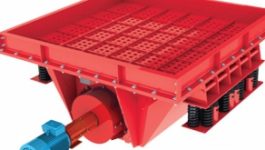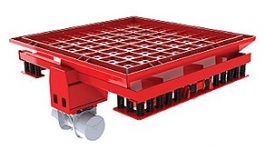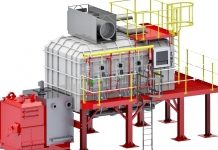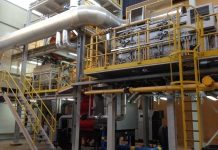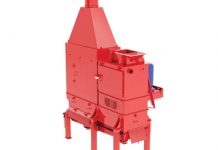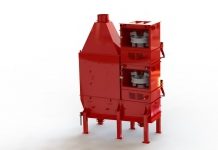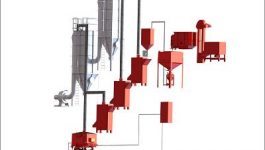- Continuous mixer
- Manipulation
- Reclamation Plants
- Sand system
- Reclaiming geopolymer mixtures
- Equipment for precoated mixtures
- Auxiliary equipment
Spartan II Series
The Spartan 200 series continuous sand mixer is Omega’s entry level machine giving the same high mixing efficiency as all previous mixers from Omega but at a cost efficient level. It is available in pivotal or articulated form with outputs ranging from 5 to 10 tonnes per hour. The II series continuous mixer has a split tube mixing trough with removable shaft for ease of cleaning and state of the art control systems.
Spartan II series key benefits:/strong>
- Economic design
- Efficient mixing
- Easy maintenance
- Rugged construction
- 5-10 TPH capacity
A simple and economic version of the 200 series Pivotal mixer is available.
This version is known as the ‘BASIC’ and is offered without a PLC and has manually adjustable pumps with no preset programmes.
Spartan III Series
The Spartan 300 series continuous mixer has half-moon blade design and side opening doors for easy cleaning with state of the art control systems. It is available in pivotal, articulated or mobile form with outputs ranging from 1 to 100 tonnes per hour.
Spartan III series key benefits:
- Excellent access to mixing chamber
- Increased mixer capacity
- Extremely robust design
- 3-100 Tonnes per hour capacity
Spartan III „T“ Turbo Series
The Spartan 300T series high speed paddle blade mixer is available in pivotal, articulated or mobile form with outputs ranging from 1 to 100 tonnes per hour. The ‘T’ series continuous mixer is supplied with side opening doors for easy cleaning and state of the art control systems.
Spartan III ‘T’ series key benefits:
- Excellent access to mixing chamber
- Mixer blade configuration designed for low addition/viscosity type binders
- Capacity to 100 tonnes per hour
- Variable mixing speed from 800 – 1400 RPM to optimise throughput and mix quality
Control Systems
IRIS System
Pattern recognition system using RFID tags:
- Micro Chip (tag) is embedded into the pattern
- Each pattern has its own recipe
- Once programmed the mixer and compaction table deliver recipe automatically
Benefits:
- Increased production*
- Reduced material consumption by 20%*
- Improved consistency/quality
- De-skilled operation
Features:
- Auto Teach for easy programming
- Clear and easy operation
- Job card integration into each recipe
- Detailed reports including:
- Material consumption
- Material costs
- Production quantities
- Production costs
- Remote PC access to reports
- Production Control
- Password security
- Alarm diagnostics
- Remote link to Omega HQ for full support
Mobiles and Specials Mixers
Custom built units up to 100TPH.
Manipulation
Omega has a very wide range of Mould Handling options, whether you require a Carousel system which allows efficient use of floor space for moulds from 600mm x 800mm up to 1600mm x 1200mm with either 6 or 8 station models available, or a Fast Loop system which can accommodate mould sizes 1000mm x 800mm up to 7000mm in size plus special sizes for customers individual needs.
Manual or automatic Carousels can be supplied for stand-alone applications, such as very small moulds or core making, or integrated into semi-automatic moulding plants. All plants can be made suitable for boxed or boxless moulds.
Along with the Carousel or Fast Loop moulding system Omega can also offer Automatic Strickle, Rollover Draws, Flood coaters, Drying Ovens (infra-red or convection heating), Auto Mould Closers and Manipulators to suit most sizes of moulds including boxed and boxless (or a combination of both).
Carousels
Omega’s options for mould handling are second to none giving options of Carousel or Fast Loop mould handling systems. The carousel system allows efficient use of floor space for moulds up to 1600mm x 1200mm with either 6 or 8 station models available.
Along with the carousel moulding system Omega can also offer Automatic Strickle, Rollover Draws, Flood coats, drying ovens and manipulators to suit most sizes of moulds including boxed and boxless.
For efficient use of space and alternative to a fast loop / Up to 1600 x 1200mm mould size
Manual or automatic carousels can be supplied for stand alone applications or integrated into semi automatic moulding plants.
FAST LOOP
Omega’s options for mould handling are second to none giving options of Carousel or Fast Loop mould handling systems. The Omega Fast Loop system can accommodate mould sizes up to 7000mm in size plus special sizes for customers individual needs.
Along with the fast loop moulding system Omega can also offer Automatic Strickle, Rollover Draws, Flood coats, drying ovens and manipulators to suit most sizes of moulds including boxed and boxless.
For larger size moulds with varying fill times. Standard machines for moulds from 1000 x 800mm up to 3500 x 2500mm, and bespoke systems up to 7000mm.
Rollover
Standard machines for moulds from 1000 x 800mm up to 3500 x 2500mm, and bespoke systems up to 7000mm.
Manipulators
Our range includes ‘A-frame’ electric manipulators (with an option of hydraulic clamping and rotation) together with beam type hydraulic units.
Units can be used for flask or flaskless moulds or combination of the two. Crane controls can be included and if required, a hoist on monorail or X-Y crane can be offered.
Flood Coating
Omega offers semi-auto or manual flood coating units.
Standard machines for moulds from 1000 x 800mm up to 3500 x 2500mm, and bespoke systems up to 7000mm.
Compaction Tables
Standard units or tailor made to suit. Maximum load from 300 kg to 10 000 kg.
Powered rollers can be included if the unit forms part of an automatic moulding plant. Inverter controls for vibratory motors is an option to give variable vibration force..
Automatic Moulds Closing
Full automatic moulds closing. The device automatically turns the top of the mould around and places it down into the mould. The compound form is then transported to the pouring line.
Automatic mould closing from size 5 up to size 10. The unit is capable of closing boxless moulds fully automatically of varying sizes.
Standard sizes for moulds from 2000 x 1400mm up to 3500 x 2500mm, and bespoke systems up to 7000mm.
Pouring and Cooling Lines
Omega can supply fully automated mould tracking software to allow control of cooling time and storage.
Overview of Reclamation Plants
Omega has a full range of mechanical sand reclamation plants suitable for all no-bake processes. These mechanical reclamation plants range from 1 tonne per hour up to 30 tonnes per hour and Omega’s unique low level range of mechanical reclamation plants mean that they can be installed without pits or special foundations. The low level range is also very compact in design and can fit into very small areas inside or outside of the foundry.
Omega’s mechanical reclamation plants use the non-aggressive, dry attrition method of binder removal, this means that fragile sand grain structures can be effectively reclaimed without sand degradation. In fact, the scrubbing action of the attrition units will round the sand grains and make them more suitable for no-bake moulding. Also, due to four stages of sand scrubbing, a good reduction in LOI can be achieved.
GAMMAVATOR
Solution for mechanical reclamation plants convenient for the smallest operations. Does not demand any building modification at the foundry.
Range from 1T/hr to 3T/hr with max deck loading from 1500kg to 500kg
GAMA HIGH LEVEL Reclaimers
Range from 6T/hr to 30T/hr
The complete range of LL units has been re-designed to incorporate improved structural design, heavier deck construction and has been re-designated as the Bison Range.
GAMA LOW LEVEL Reclaimers
Reclamation GAMMA LL (Low Level – in the level of the foundry floor) does not demand any building modifications at the foundry.
Range from 6T/hr to 15T/hr with max deck loads from 1000kg to 5000kg.
The complete range of LL units has been re-designed to incorporate improved structural design, heavier deck construction and has been re-designated as the Bison Range.
GAMMAMAJOR
Robust reclamation plant solution placed under the floor level, which also serves as a shakeout and a reclamation device.
Range from 15T/hr to 20T/hr with max deck loading from 7000kg to 10000kg
Coolers / Classifiers
Range from 1T/hr to 30T/hr
Sand transport, feeders
Sand transport: pneumatic feeders, pipe pneumatic conveying
Feeders of pneumatic transport are used to send dry quartz sand with compressed air and fittings. The equipment works in the automatic mode, i.e. the operation of the feeder is controlled by a maximum level probe placed in the target daily bin.
There are two systems of sand transport available: transport system with a leer pipe and with a full pipe.
Range from 1 T/h to 30 T/h.
Shakeouts
Large reclamation plants for deck loading up to 100 tonnes and 60 tonnes per hour throughput.
Thermal Reclamation
Omega has a full range of gas-fired thermal reclamation plants ranging from 250kg/hour up to 12 tonnes per hour for the complete reclamation of all organic binder sand systems as well as recovering silica sand from green sand (to be fed back to the coreshop). All Omega thermal reclamation plants can be used with natural gas, liquid propane gas or compressed natural gas. Due to Omega’s energy efficient heat recovery system and patented ‘Dead Bed’ insulation, these thermal reclamation plants operate with low levels of gas consumption and with zero stack emissions.
Omega also offer a 3 year warranty on all thermal reclamation furnace insulation and gas burner systems, again due to the high performance of the patented ‘Dead Bed’ system of sand insulation.
For 20 years Richards Engineering has been at the fore front of thermal reclamation
- Patented ‘dead bed’ design allows 3 years standard warranty on burners and lining
- High thermal efficiency and heat recovery system. Typical gas consumption is 14kg on LPG per tonne of sand reclaimed
- Extremely low maintenance equipment designed to run un-aided with full self-diagnostics
- Fast start up times, typically 30 minutes
- Meets all current emission standards without the need for an after burner
Seccondary Attrition
The ‘USR’ Secondary Attrition Unit removes a significant portion of the binder without damaging the sand grain.
Greensand Reclamation
Regenerace bentonitové směsi pro další použití zpět pro výrobu jader je kombinací mechanického a tepelného očišťování zrn ostřiva. Obvyklé zbytky jílu po regeneraci jsou pod 0,1 %.
Chromite Recovery
The Omega Chromite sand reclamation system consists of a combination of magnets and density seperators to consistently and efficiently achieve purity rates of >98%
Machines sizes ranging from 1-10 TPH
The main equipment components are arranged vertically, discharging downwards at each stage to final discharge of the silica sand, chromite sand and a waste product at the lowest level, from where the silica and chromite sands may be elevated to a storage hopper, by either belt and bucket elevators or pneumatic conveying systems.
The System provides a highly competitive solution giving a rapid return on capital.
Sand bins
Outdoor bins designed for the storage of dry quartz sand. The bins are filled using the DN 80 fill pipe, by connecting directly to the bin of the silo-truck with sand.
Transportation of sand: pneumatic feeders, pipe pneumatic conveying
Feeders of the pneumatic transport are used to send dry quartz sand with compressed air and fittings. The equipment works in automatic mode, i.e. the operation of the feeder is controlled by a maximum level probe placed in the target daily bin.
Daily sand bins
Inner bins designed for the storage of dry sand (or multiple types simultaneously) placed above the mixer to prepare a mixture for the production of moulds or cores. The bins are filled using pneumatic feeders from outdoor sand bins.
Reclaiming equipment, attritor
Reclamation allows the binder envelope of sand grains to be removed.
- The quality of the reclaimed sand is affected by the properties of the used sand and the reclamation process and method.
- The properties of the used sand depend on the quality of the sand, the amount of the binder and hardener, the ratio of sand/metal in the frame and the casting temperature.
The used sand starts the reclamation process with a certain amount of moisture and proportion of pollutants.
- How much these values can be reduced depends on the reclamation method and the intensity of dedusting.
- Just wiping the binder envelope is not enough, the dust must also be removed from the system.
As geopolymeric binder mixtures are characterized by the destruction of the adhesive envelopes, a mechanical reclamation method can be used. A simple one-step mechanical reclamation can be used or a second stage can be included. The second stage involves intensive abrasion of the grains with an activating effect. This allows more used sand to be returned into the sand mixture. It also increases the strength of blends with recycled sand even if the binder dosage is reduced.
Benefits:
- Foundries can reduce the amount of waste
- Reduced costs
- Positive environmental impact
The quality of reclaimed sand depends on the properties of the used sand and the reclamation method. The properties of the used sand depend on the dosage of the binder and the hardener and naturally on the ratio of sand/metal in the mould. Furthermore, the casting material also has an affect (casting temperature).
Used sand starts the reclamation process with some humidity and a certain proportion of pollutants. How much these values can be reduced depends on both the reclamation method and also on the intensity of dedusting. Just wiping the binder envelope is not enough, the dust must also be removed from the system.
If these conditions are not followed, the following problems may occur. The use of reclaimed sand will be lower, the proportion of waste will increase and may cause an arch in silos and problems may arise during blending mixtures.
The reclamation process is therefore one of the most important points of the entire production cycle in foundries and so we give it a lot of attention and are still working on improving it.
Scheme of using reclaimed sand by including the second reclamation stage
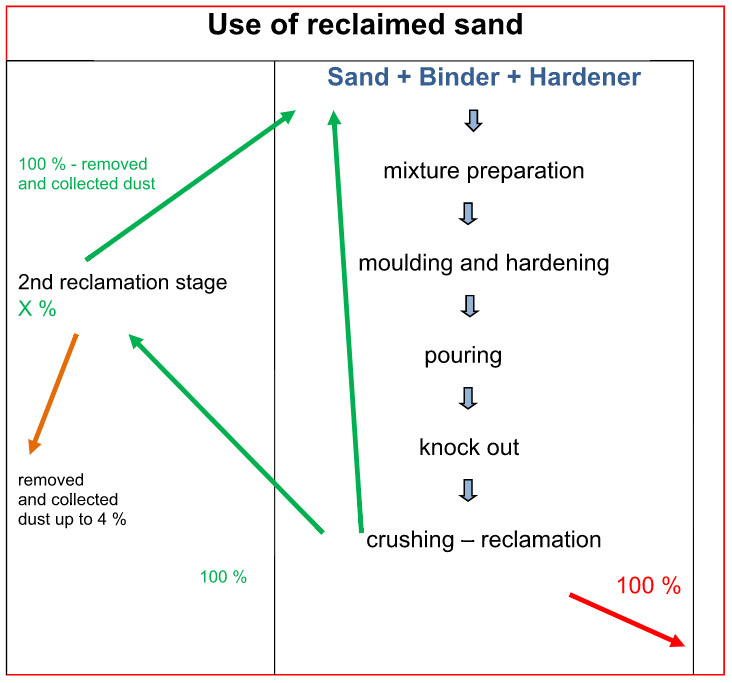
Pilot reclamation equipment
The following figure shows the reclamation assembly installed in SAND TEAM. It is used for research and development testing of reclamation possibilities of moulding sands. The reclamation equipment includes its own uniquely designed attritor (5).
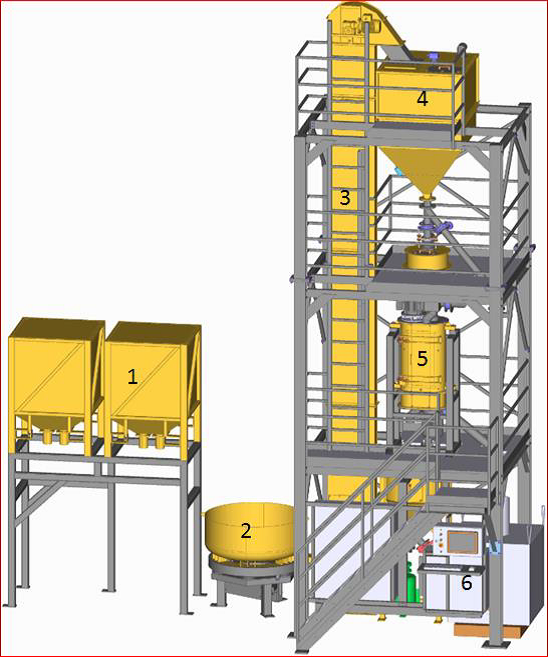
Description of the equipment:
- dosing hopper for the loose reclamation material
- crusher
- bucket elevator
- storage hopper
- attritor (reclamation unit, the second reclamation stage)
The equipment works on the principle that the input used sand is crushed in a crusher and is conveyed by a bucket elevator into the storage hoppers above the reclamation equipment. Then a specified quantity of the crushed material is poured into a weighing hopper. A single dose for our equipment is 50 kg. From there, the sand is poured into the attritor. Here intense attrition of the sand grains occurs by the metallic rotating parts. At the same time the sand is aerated and the whole space is vented. The abrasion lasts for some time and is experimentally verified and adjusted. Then the reclaimed sand is poured.
Reclaiming bentonite mixtures
Reclaiming bentonite mixtures for further use for manufacturing cores involves a combination of mechanical and thermal cleansing of the sand grains. The typical clay remains after regeneration are less than 0.1 %.



